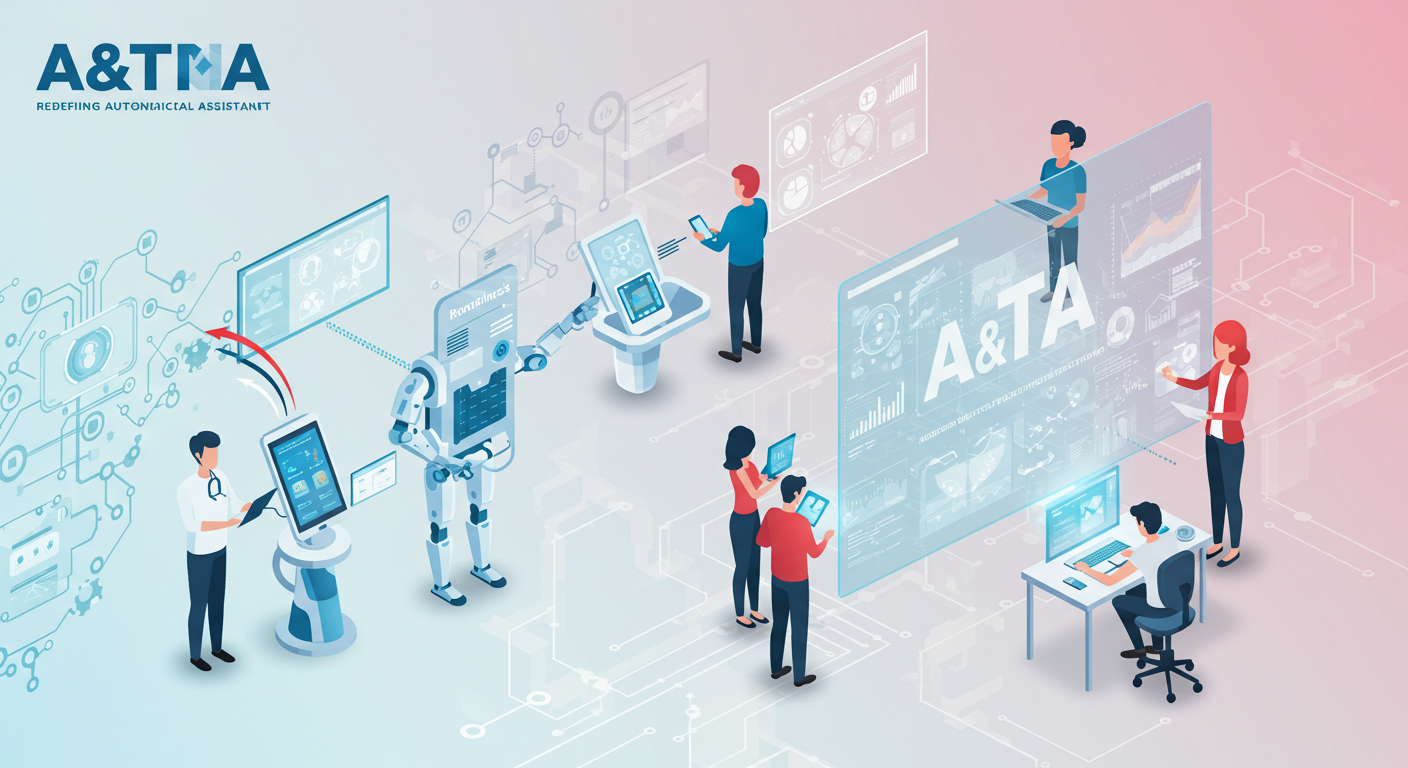In today’s tech-driven world, innovation is moving at an unprecedented pace. Businesses, educational institutions, healthcare providers, and even governments are seeking tools that not only improve efficiency but also ensure sustainable growth. One such transformative solution is a&ta—an integrated system of automation and technical assistance.
This powerful duo is now being adopted across industries to streamline processes, reduce costs, and ensure consistent results without sacrificing quality.
Understanding What A&TA Really Means
A&TA, short for automation and technical assistance, is a two-part strategy that combines software-driven automation with expert technical support. While automation handles repetitive and time-consuming tasks, technical assistance ensures smooth functionality, troubleshooting, and system optimization.
This hybrid approach is critical in today’s environments where speed, precision, and adaptability are vital. Whether you’re running a small business or managing a large enterprise, implementing a&ta can significantly enhance your operations.
How A&TA Evolved into a Business Necessity
From Manual Labor to Machine Intelligence
Years ago, businesses relied heavily on manual input for data entry, customer management, scheduling, and other basic operations. Over time, automation tools like CRMs, ERPs, and AI bots began replacing repetitive work.
However, even the most advanced systems need human oversight. This gave rise to a&ta—a balanced framework where humans and machines collaborate to achieve optimal outcomes.
Why Now? The Digital Urgency
Post-2020, the push for digital transformation skyrocketed. Remote work, cloud computing, and data security became top priorities. In this environment, a&ta is no longer a luxury—it’s a survival tool.
Core Benefits of Adopting A&TA
1. Higher Efficiency
With a&ta, businesses can automate everyday tasks like reporting, appointment scheduling, data backups, and even email responses. Technical teams ensure the infrastructure remains reliable and updated.
2. Reduced Costs
By offloading repetitive jobs to automated systems, companies reduce hiring and training expenses. With fewer errors and less downtime, profits improve.
3. Improved Customer Satisfaction
A chatbot answering FAQs in seconds and a technician available for complex queries ensure customers receive fast, intelligent service 24/7.
4. Scalability and Flexibility
Whether scaling up or down, a&ta adapts quickly to changes in workload. Businesses can expand operations without overextending resources.
Where A&TA Is Making a Big Impact
A. A&TA in E-commerce
Online stores now rely on automation for order processing, stock updates, email marketing, and fraud detection. Technical teams monitor server performance, fix errors, and manage integrations.
Real-world Example:
An e-commerce brand uses AI to recommend products, while its support team resolves customer payment issues in real time.
B. A&TA in Healthcare
Hospitals use automation for patient record management, appointment reminders, and diagnostic support. At the same time, IT staff maintain data security and resolve technical glitches.
Benefits Include:
-
Faster diagnosis with AI
-
Secure and compliant data storage
-
Reduced administrative burden
C. A&TA in Education
Universities are automating student enrollment, grading, and notifications. Technical assistance ensures platforms like Zoom or LMS portals remain functional during peak usage.
D. A&TA in Manufacturing
Automated machines assemble parts, track production, and detect faults. Engineers provide maintenance and analyze performance metrics to improve system efficiency.
Challenges of A&TA Implementation
While a&ta offers numerous benefits, businesses should be aware of potential roadblocks:
1. Resistance to Change
Employees may fear automation as a job threat. Proper training and communication are key to smooth transitions.
2. Integration Issues
Legacy systems may not be compatible with modern a&ta tools. Upgrades or custom APIs may be required.
3. Cybersecurity Risks
With more automation comes more data. Businesses must invest in robust cybersecurity measures to protect sensitive information.
The Future of A&TA
As technology evolves, a&ta will become even more intelligent and autonomous. Here’s what the future holds:
-
AI-powered decision-making: Not just automating tasks but offering insights and recommendations
-
Voice-driven automation: Voice assistants integrated into business platforms
-
Predictive technical support: Systems that detect issues before they occur
-
Decentralized support models: Cloud-based A&TA frameworks accessible from anywhere
By embracing these trends, businesses will stay ahead of the curve and lead with innovation.
Getting Started with A&TA: A Step-by-Step Guide
Step 1: Assess Your Needs
Identify which processes are repetitive, error-prone, or time-consuming. These are ideal candidates for automation.
Step 2: Choose the Right Tools
Opt for automation platforms that align with your goals. Common tools include:
-
Zapier (workflow automation)
-
HubSpot (CRM)
-
Freshdesk (automated support + tech help)
Step 3: Build Your Technical Support Team
Whether in-house or outsourced, ensure you have IT experts ready to handle technical issues, updates, and integrations.
Step 4: Train Your Team
Successful a&ta adoption requires staff training to understand and work with new systems effectively.
Why Businesses Can’t Ignore A&TA Anymore
The modern business environment demands agility, speed, and reliability.delivers on all fronts by:
-
Reducing operational lag
-
Improving customer experiences
-
Enabling real-time insights and responses
-
Lowering overall expenses
Companies that ignore these tools risk falling behind competitors who are actively leveraging to scale faster and smarter.
Conclusion: A&TA Is the Future of Smart Business
In a world increasingly dependent on data and digital systems, provides a foundation for scalable, secure, and efficient operations. By combining intelligent automation with proactive technical assistance, businesses can unlock new levels of productivity and innovation.
Whether you’re a tech startup or a traditional company embracing change, investing in is a strategic move toward a more agile and future-ready business model.

